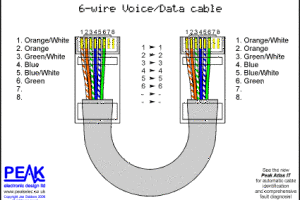How Cloud Computing is Affecting Network Cabling
Cloud computing is gathering popularity and is becoming the networking wave of the future. Both IT professionals and network cabling technicians alike need to embrace its growth and quickly understand what it means for their business. With the need for speed and agility at an all time high, technology is struggling to keep up to make the ever in demand cloud services function easily and efficiently.
What exactly is cloud computing? Basically, it’s when whatever application you are using is delivered over the network, as opposed to being processed locally. For example, creating a written document on a service over the Internet by connecting to a browser, instead of using a physically purchased product like Microsoft Word. There are a variety of cloud computing services available — Google Apps, Skype, Box.net, QuickBooks Online, and Basecamp, just to name a few. Many small businesses are jumping on this bandwagon in a effort to save money — word processing programs for an entire staff can get very expensive, and Google Docs and other similar online programs in the cloud are free.
With all of these readily available and easy accessible options, many companies are looking to jump into the cloud, but are worried about maintaining the security and reliable performance of their traditional on-premises deployments. Businesses are looking for greater adaptability, measured service, and room for growth. The network cabling industry is responding with discussions about the infrastructure necessary to support a successful cloud deployment.
When designing or upgrading a system for a cloud computing, network cabling companies will now have to take into account a different kind of security focus, a definite need for high transmission speeds, and a flexible structure for the future cloud technology that is already in the works. Almost all businesses that want to operate in the cloud will need to have the cabling infrastructure that allows them 40 and 100 Gbit per second speeds. Many were happy with CAT6 copper cabling for this, but the industry is quickly transitioning to CAT6a and fiber optic cabling to meet the high speed requirements. As for security, the majority of applications will be delivered over the network, and so bandwidth must be scaled to fit the requirements of the users. In addition, there must be advance planning for the skyrocketing popularity in using mobile devices on the network.
Cloud computing is fast becoming the preferred way to do business, mostly due to the agility and flexibility of it’s services. The Cisco Global Cloud Index, in an effort to show the future growth of cloud-based IP and global data center traffic, forecasts that over 33% of all data center traffic will be cloud-based in the next years. And the IDC believes that the market will have jumped to a 45 billion dollar industry within the next year. It seems as though the clouds are here to stay, and by redesigning network infrastructures, the network cabling industry will be a big part of that success.




